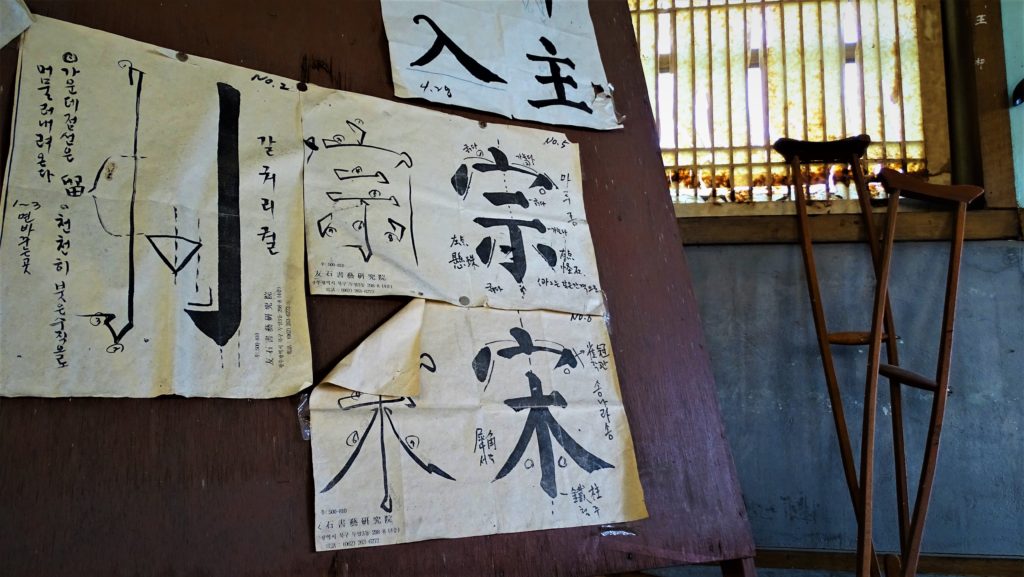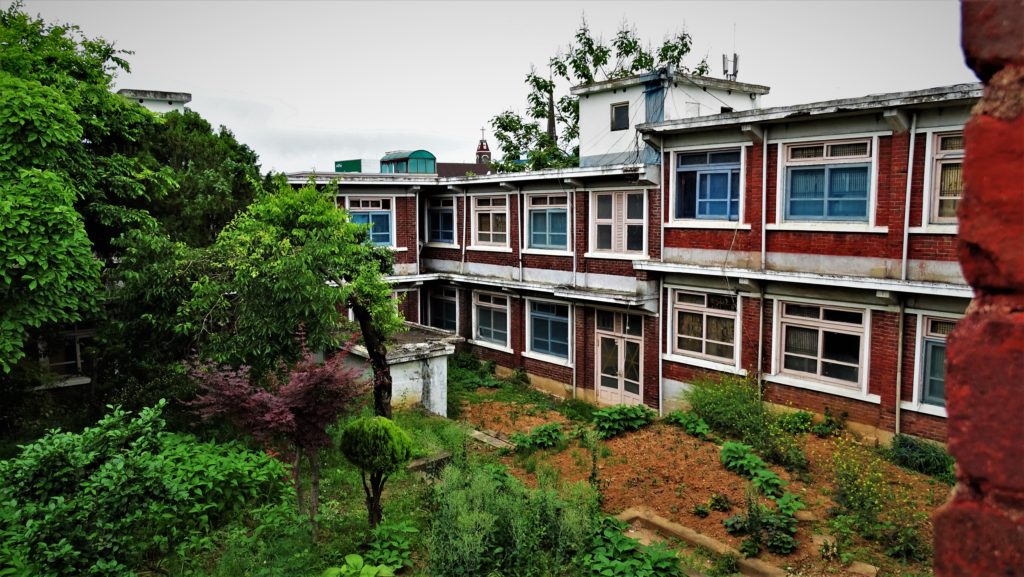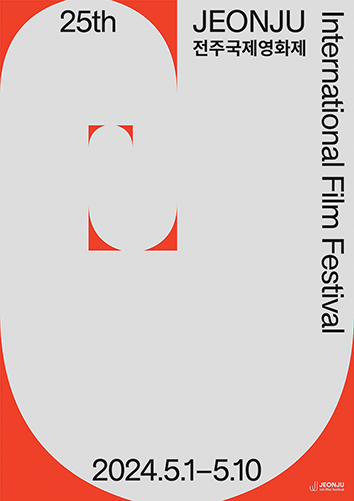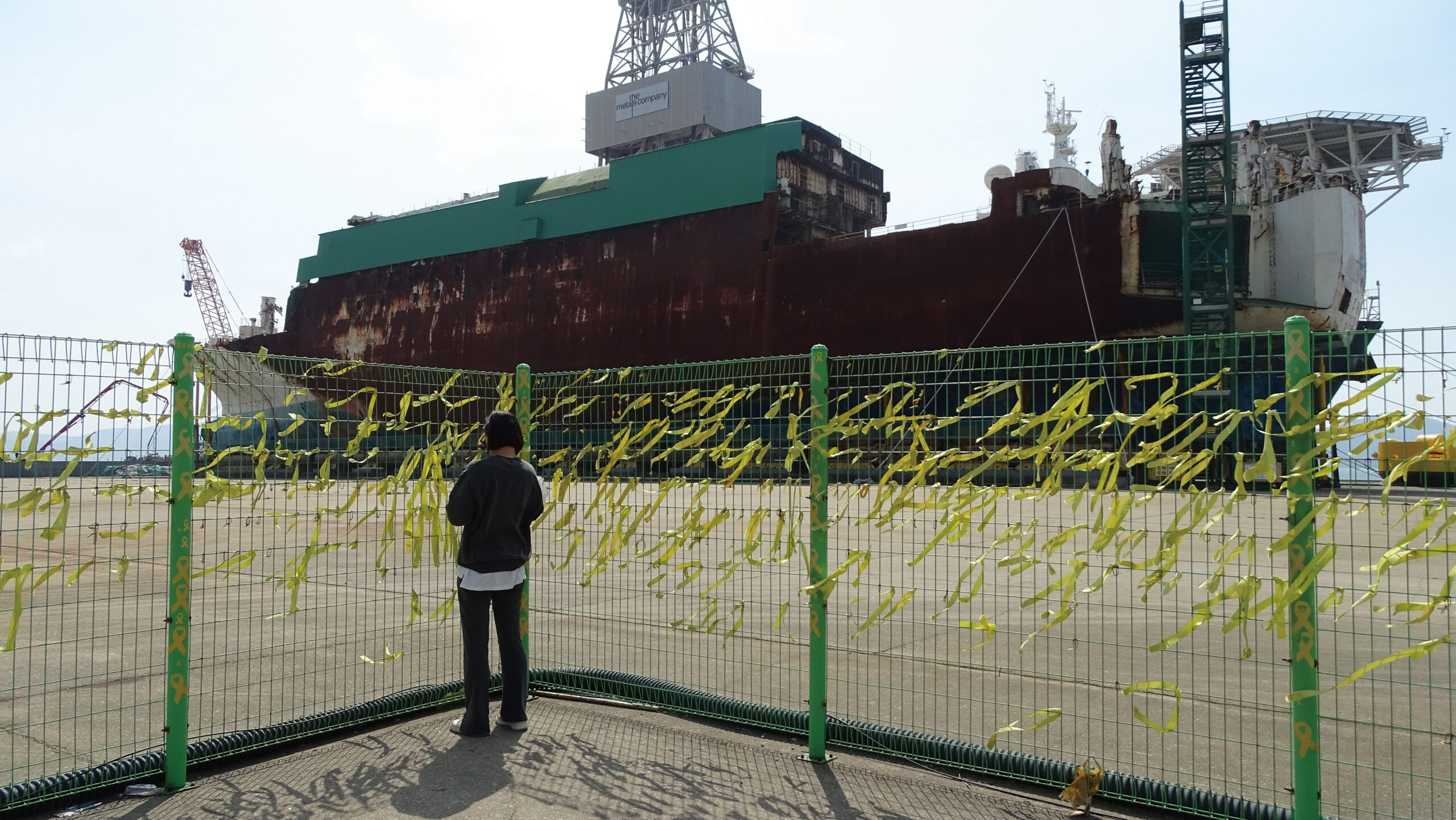Strange Bedfellows at Punghyang Inn
Written and photographed by Isaiah Winters
Stagnating somewhere in Gwangju’s Punghyang-dong is a time-warped dormitory with an odd twist. From the outside, the abandoned red brick inn with white-trimmed windows and eaves looks like nothing more than an old-fashioned school. However, inside where spacious classrooms should be, there are instead long concrete corridors lined with tiny partitioned rooms, each with its own little loft and grimy kitchenette. Among the many fetid rooms, the freshest sign of life is a lone dog skull with no body in sight. Eerie as this place may be, it still isn’t all that unusual of a find. It’s at the end of a second-story corridor that things take an unexpected turn.
There a door gives way to a large, open room unlike any other part of the building. Lined with dusty old bookshelves, yellowed maps, and a retro chalkboard, the vintage learning space immediately puts the inn’s crude dwellings to shame. All around, the room’s weathered paper windows (창호지 창문), many perforated by time, provide a stream of warm, sepia-toned light that gives the study hall a uniquely halcyon feel. In a corner, a clunky chalkboard eraser cleaner begs you to give it a few cranks. Made decades ago by Edison, a Korean company, it’s still great fun to operate and gives you the sense that you’re doing yeoman’s work.

Needless to say, this coupling of dingy, downscale lodgings with a warm, homey schoolroom makes for strange bedfellows. It also makes the place worth researching, difficult as that may be.
For starters, the site is situated near Gwangju National University of Education, which provides a major clue as to its purpose. An old aerial photo of the university from 1960 turned up online; however, the inn’s location is just barely outside the photo’s frame, making it hard to say whether it dates back that far. I suspect it doesn’t.
More than just a simple flophouse for transients of all backgrounds, it likely functioned as student housing at some point, with a humble educational annex for reading, learning, and checking out books. Published in the 1980s and 1990s, most of the books were geared toward high school and university students – another clue. Despite their relatively recent publishing dates, the books generally look beat to death, which suggests they might have been donations and/or subjected to a revolving door of young scholars who put them through hell.

Many of the books have 풍향숙 (Punghyang Inn) written on the side – evidently the site’s name. The Internet is completely devoid of this name, save one lonely message board post from 2003 where a poster, writing to a friend, claims to have been on standby at Punghyang Inn “24 hours a day” and says they should get in touch whenever said friend is in town. Unfortunately, on my visit 15 years later (almost to the day), no such person on standby could be found. Without further help from the Internet, what remains onsite has had to suffice.
Featured most prominently on the wall of the classroom is a 1983 student pledge written in beautiful black ink brushstrokes listing the dos and don’ts of Punghyang Inn. The first commandment forbids drinking, gambling, and smoking; the second loud singing, swearing, and mayhem; and the third sleeping off premises, bunking with outsiders, and letting in outsiders. Chief among the list’s dos is to eat, sleep, study, and nourish for a balanced life; next is to live a life of planning and preparation; and then to practice diligence, frugality, and cleanliness. For the record, the don’ts outnumber the dos 16 to 15 – a narrow schoolmarm victory.

Another prominent piece of classroom memorabilia is a large easel with white sheets of paper detailing the ornate brushstroke order of hanja (Chinese characters). By exposing each character’s underlying bone structure, as it were, the instructive outlines reveal the complexity behind every point of contact. When viewed like this in skeletal form, the loose, flowing veneer of hanja calligraphy is stripped down to its most precise, almost mathematical undertones. The final product is a flourish of chaos moored by order.
Another notable feature of the schoolroom is one of its two time-worn maps of Korea. Hailing from 1975, it uses an unusual Romanization system that gets the vowels right but botches certain final–initial consonant combinations. The result is an alternate universe with destinations like “Jeon ra nam do” (Jeollanam-do) and “Mogpo” (Mokpo). The map also features sporadic icons representing what each of Korea’s regions is “known for.” For example, there’s an image of a little hiker trekking through Hwasun and a rather possum-like Jindo dog (진도개) guarding Jindo Island.

Strangely, only Gwangju’s main icon has been deliberately rubbed off the map, perhaps by some angsty, self-loathing teen or a prudish teacher attempting to remove that teen’s lewd embellishments. It looks like we’ll never know what the Gwangju of 1975 was reduced to on this particular map. Beyond these and a few other trifling details, there’s not much I can definitively say about Punghyang Inn. It’s just another one of those strange old things scattered around Gwangju. And much like Gwangju’s long-lost icon, maybe it’s a better story if some things remain a mystery.
THE AUTHOR
Originally from Southern California, Isaiah Winters first came to Gwangju in 2010. He recently returned to South Korea after completing his MA in Eastern Europe and is currently the new chief proofreader for the Gwangju News. He enjoys writing, political science, and urban exploring.








